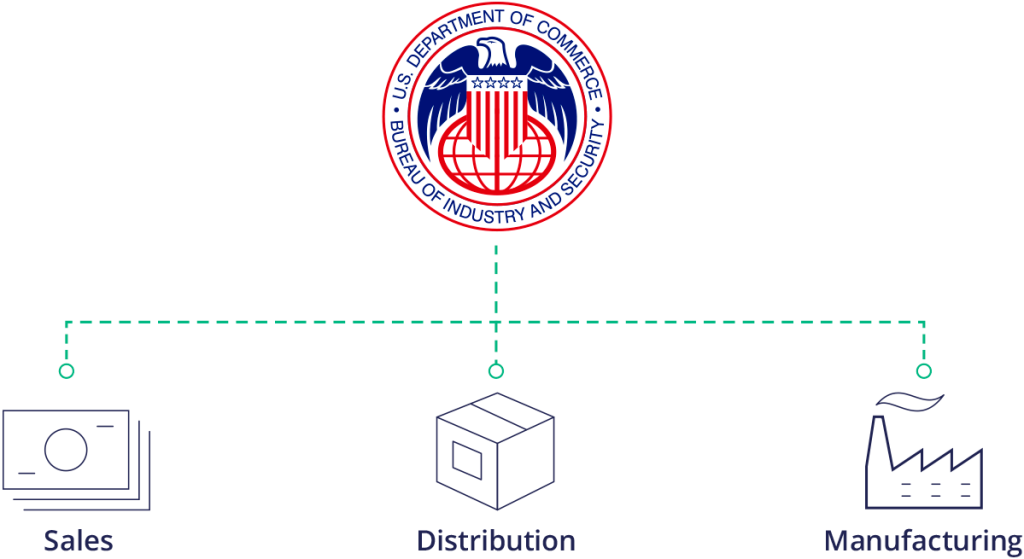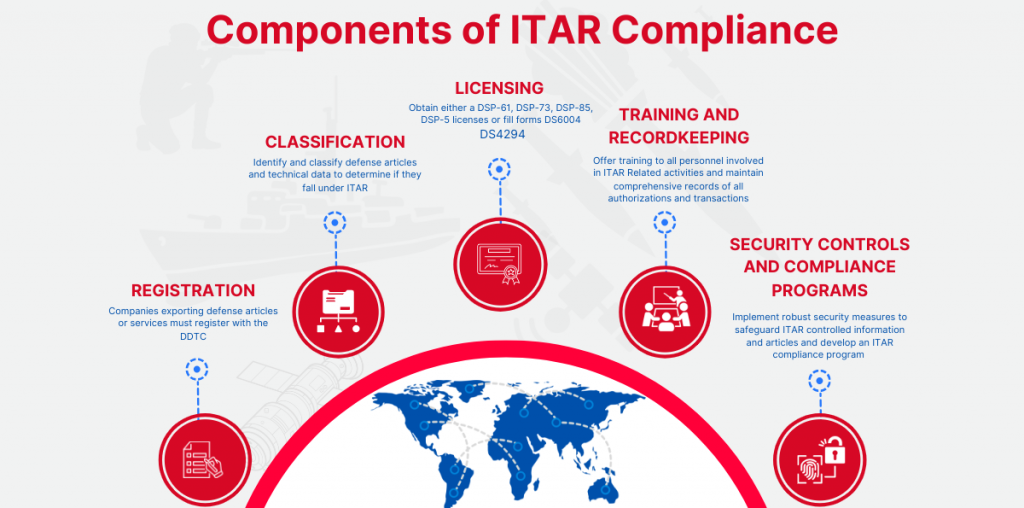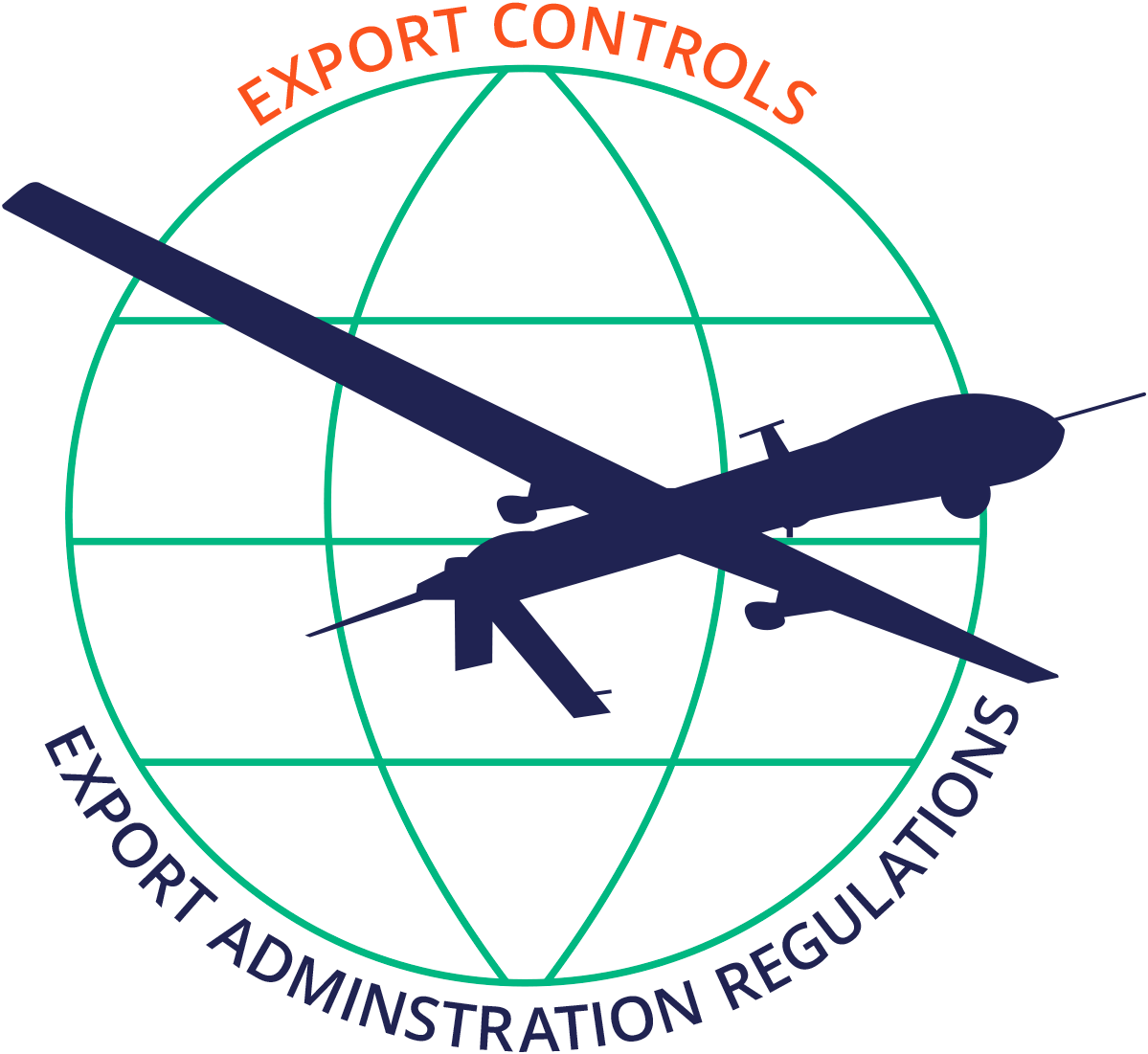Export Control Regulations: EAR, ITAR, Dual-Use Goods
Export control regulations play a critical role in ensuring that sensitive technologies and products are not misused or fall into the wrong hands. For companies engaged in international trade, compliance with regulations like the Export Administration Regulations (EAR), International Traffic in Arms Regulations (ITAR), and the management of dual-use goods is crucial to maintaining national security and preventing unauthorized transfers of sensitive items.
The Export Administration Regulations (EAR)
The EAR, managed by the U.S. Department of Commerce, governs the export of commercial goods, technologies, and services that could have both civilian and military applications. These are known as dual-use goods. Examples of items regulated under the EAR include advanced electronics, communications equipment, and computer software. The regulations aim to prevent sensitive technologies from reaching unauthorized end-users or countries that may pose a threat to U.S. national security.

EAR is primarily concerned with controlling products that could be used for military purposes but are not exclusively military in nature. For example, a satellite technology could be used for telecommunications, but the same technology could also be repurposed for military reconnaissance. The EAR requires businesses to determine whether a product requires an export license based on its classification, the destination country, and the specific end-use of the product.
Exporters must carefully review the product’s Export Control Classification Number (ECCN), which determines whether the product falls under EAR controls. If the item requires a license, exporters must apply to the Department of Commerce for approval before sending it abroad. A failure to comply with the EAR can result in substantial penalties, including fines and loss of export privileges.
The International Traffic in Arms Regulations (ITAR)
Unlike the EAR, ITAR, regulated by the U.S. Department of State, governs the export of defense-related articles and services. ITAR applies to products and technologies that are specifically designed for military use. These include weapons, military-grade electronics, and aerospace technologies. ITAR is more restrictive than EAR, as it focuses on items that have direct military applications and are critical to national defense.
The goal of ITAR is to prevent the transfer of sensitive military technologies to foreign governments, entities, or individuals who may use them against U.S. interests. Compliance with ITAR is essential for businesses in the defense sector or those manufacturing military-grade products. Under ITAR, almost all defense-related articles require an export license. Even seemingly harmless products, such as aircraft parts or encrypted communication systems, may be subject to ITAR controls if they are deemed essential for military applications.

Exporters must ensure that they are properly classifying their products according to ITAR and obtaining the appropriate licenses for exports. One of the key distinctions of ITAR is its strict requirement for export licenses for defense-related goods. Unlike EAR, which may allow for some leniency in licensing, ITAR imposes stringent controls to ensure that military technologies are not misused.
Dual-Use Goods
Those goods are items that have both civilian and military applications. These products are regulated by both EAR and ITAR, depending on the intended use. For example, a satellite system may be used for both civilian telecommunications and military reconnaissance, making it a dual-use product. Exporters must assess the potential military applications of their goods and determine which regulatory framework applies.
The challenge with dual-use goods is that they are not always clearly classified as military items. Many technologies used in everyday applications, such as computers and telecommunications equipment, can be repurposed for military purposes. Therefore, exporters must carefully evaluate the potential end-use and destination of their products to determine whether they fall under export regulations.
Businesses dealing with it must pay particular attention to the licensing requirements under both of them. Even if a product is primarily used for civilian purposes, it may still require an export license if it has a potential military application.
Key Considerations for Trade Compliance
1. Licensing Requirements
The first step for businesses is to determine whether a product requires a license for export. This is based on the classification of the product, its intended use, and the destination country. Exporters must check the ECCN under EAR or the U.S. Munitions List (USML) under ITAR. If a product is subject to export controls, a license must be obtained from the relevant authority before shipment.

2. End-User and End-Use Screening
Exporters must conduct thorough due diligence to ensure that their goods are not being sold to prohibited parties. This includes checking customers and end-users against government lists of restricted entities and individuals. The U.S. Department of Commerce and the Department of State provide screening tools to verify compliance.
3. Recordkeeping and Reporting
Proper recordkeeping is essential for compliance with export control regulations. Exporters must maintain detailed records of their transactions, including the classification of products, licensing information, and screening results. These records may be requested during audits or investigations, so it’s important to keep them accurate and up to date.
4. Risk Management
Businesses should implement a robust compliance program to mitigate the risk of violations. This includes training staff on regulations, conducting internal audits, and assigning a compliance officer to oversee export activities. A proactive risk management approach can help companies avoid costly mistakes and penalties.
5. Staying Informed on Regulatory Changes
The regulations are constantly evolving. Changes in geopolitical conditions, security concerns, and technology advancements may lead to modifications in the regulations. Companies must stay updated on any changes to EAR, ITAR, and the goods regulations to ensure ongoing compliance. Engaging with industry groups and regularly reviewing government publications are good practices for staying informed.

Conclusion
Navigating the complexities of export control regulations, including EAR, ITAR, and the goods regulations, is essential for businesses involved in global trade. These regulations ensure that sensitive products and technologies do not fall into the wrong hands and that international trade remains secure. By understanding the differences between these regulatory frameworks and implementing robust compliance measures, businesses can mitigate risks, avoid penalties, and continue engaging in international commerce with confidence.
Industry Insights
news via inbox
Nulla turp dis cursus. Integer liberos euismod pretium faucibua








